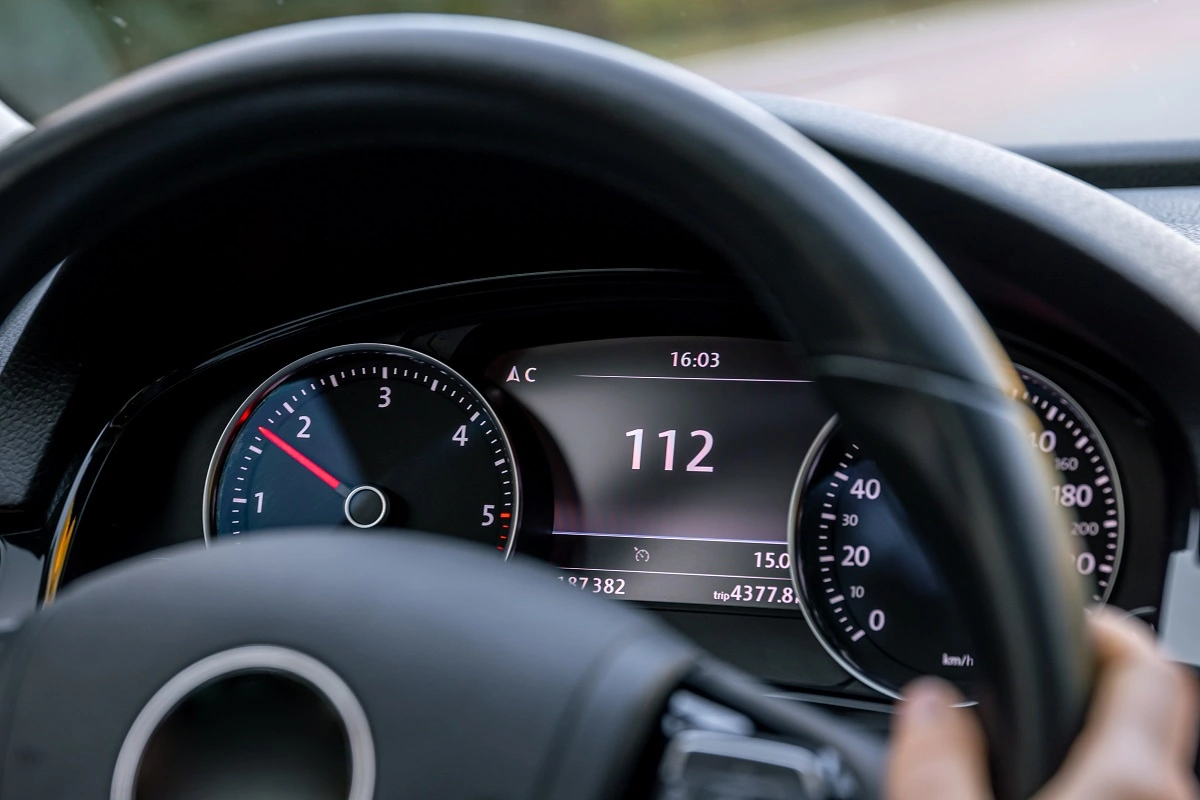A car has multiple parts that operate together to make it run. One of the crucial elements is the Vehicle Speed Sensor (VSS). The VSS is a very crucial element in your car because it provides vital information about the car’s speed, it can measure the speed of the wheels or transmission output shaft of your car.
VSS has another name known as transmission speed sensor (that observes the speed of transmission and wheels). So, VSS directs low-voltage signals to maintain modules that handle engine actions like ignition timing and air/fuel ratio. It also assists in controlling transmission shift points and initiating diagnostic tests.
What is a vehicle speed sensor?
A Vehicle Speed Sensor (VSS) is a tiny electronic device that indicates how fast and in what direction a vehicle is moving. The speed sensor is placed on the transmission or transaxle, and it could be of any two-basis type magnetic or a half-effect sensor. So VSS is linked with the vehicle’s ECM, or Powertrain Control Module (PCM), to provide details about its pace and movement.
What is the role of a Vehicle Speed Sensor?
The primary function of a Vehicle Speed Sensor (VSS) is to measure the speed and direction of a vehicle. Many VSS units operate using a magnet positioned within the transmission housing to detect vehicle speed.
At the output of the transmission, the VSS detects vehicle speed. On one side, a rotating magnet generates voltage. The generated voltage is sent to a module, which calculates vehicle speed based on the rate of rotation. While the vehicle is in motion, the VSS generates four pulses for each rotation of the magnet.
Transmission requires information about vehicle speed to shift the gears accordingly. This information also assists the following systems to work better:
- Cruise control systems
- ABS
- Electronic power-assisted steering
- Engine control systems
Currently, the vehicle speed is often determined using data from wheel speed sensors integrated with ABS and electronic stability control systems.
Kinds of Vehicle Speed Sensor
Typically, there are two fundamental categories of VSS: magnetic sensors and hall effect sensors. Both types of VSS work differently but serve the same purpose.
Magnetic Speed Sensors
Magnetic Speed Sensors, also known as Reluctor sensors, are a common type of VSS that has been around for a long time. They count on magnetism to function. These sensors consist of a magnet and a coil. The magnet is positioned near rotating parts like the mediation or wheel, whose speed is being checked. When the magnet rotates, it generates a magnetic field that induces electricity in the coil. This voltage blends with the speed of the rotating part.
Pros of Magnetic sensors
- Plain and dependable technology
- Affordable price
Cons of Magnetic sensors
- sensitive to signal interference
- Less accurate at low speeds
Hall Effect Sensor
Hall Effect Sensors are an advanced type of speed sensor that operates on the basis of the Hall Effect. They offer improved accuracy and reliability compared to magnetic sensors. These sensors use a magnet and a semiconductor component to encounter alterations in magnetic fields. As the magnetic field shifts, it produces a voltage in the semiconductor chip, allowing for precise speed measurement.
Pros of Hall Effect Sensor
- Highly precise
- Less liable to interference
- Effective at low speeds
Cons of Hall Effect Sensor
- It is more extravagant than magnetic sensors
Generally, Hall Effect Sensors are the favored option for advanced vehicles due to their accuracy and reliability. Nevertheless, magnetic sensors remain ordinary in former cars because of their coherence and affordability.
Causes of Vehicle Speed Sensor Failure
The cause of speed sensor failure could be various factors, including:
1. Internal damage:
If the speed sensor is internally not in good shape, it may create unusual output signals or fail to create any signals. So you can check the issue using a voltmeter or digital oscilloscope.
2. Physical damage:
Impairs or cracks to the speed sensor casing can also become the cause of its failure.
3. Wear and tear:
Over time, the magnetic elements of the sensor can wear out or become damaged, affecting its functionality.
So these factors can lead to the breakdown or fault of the speed sensor, promoting defective speed readings or a complete failure to transmit speed data.
Signs of a Faulty Vehicle Speed Sensor
The vehicle speed sensor creates low-voltage signals that are dispatched to control modules. Different types of wheel speed sensors provide data to the engine and transmission control systems. This data helps in speed adjustments. Additionally, other systems like cruise control can use this information, even if it depends on the specific make and model of the vehicle.
There are multiple types of sensors in your car and all of them are required to work appropriately for optimal engine performance.
Considering that a defective speed sensor can impact your car’s performance. So it is crucial to recognize the signs of faulty VSS.
1. Transmission Malfunction
When a vehicle speed sensor crashes, it can cause transmission issues. The transmission system depends on the speed sensor to indicate the timing of gear shifts. If the sensor fails to transmit the signal, the transmission won’t function appropriately. As a result, a faulty speed sensor can abruptly affect the operation of the automatic transmission.
If your vehicle’s speed sensor is not working properly, you may observe symptoms like firm shifting, restricted gear operation, retained shifting, and rough shifts.
2. Engine Light
If you observe your car’s engine light is on along with ABS or traction control lights, check the error code. You can check the error code with the help of a tool called an OBD-II scanner. Engine light can be also turned up to show some errors in VSS.
3. Cruise Control Activation
For safety concerns, if there’s an issue with the VSS of your car, the ECU switches off the cruise control and stops it from working. When you try to turn it on but it doesn’t engage, it’s a symbol that there is a malfunction. If you notice this sign you better go to a mechanic to check your car. They’ll figure out why the autopilot isn’t working.




